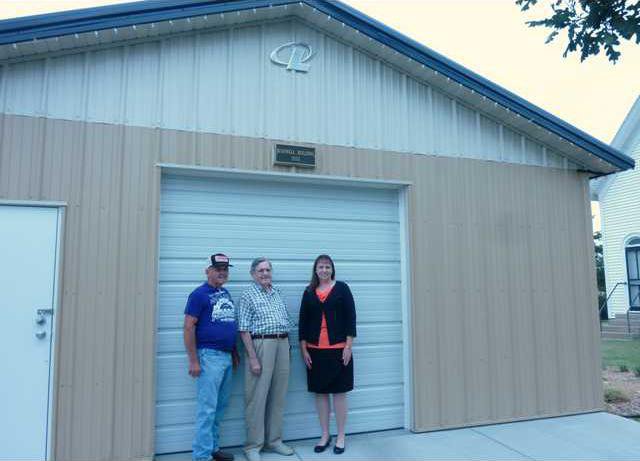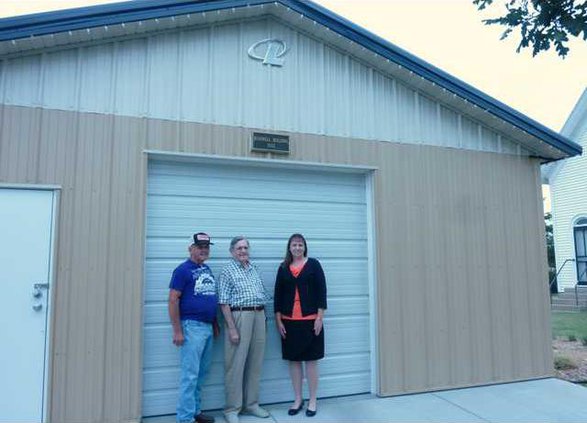The newest building at the Barton County Historical Society Museum and Village won’t be open to the public, but it makes room for more artifacts to be seen by visitors, Museum Director Beverly Komarek said.
The 24-by-40 metal building, named the Bushnell Building in honor of former Great Bend residents Barbara and Owen Bushnell, was completed without fanfare earlier this summer. It provides some much needed storage space for mowers and other maintenance equipment, as well items not normally on display. Much of what’s going into the building is being moved from the Blacksmith Shop. That, in turn, will allow the museum to use that 30-by-60-foot stone building for exhibits, including original blacksmith shop equipment donated by the Owen Bushnell Estate, and a machine shop line shaft donated by Barbara Bushnell in her husband’s memory.
Owen Bushnell died July 1989, and Barbara died in April 2011. After Barbara’s death, the Golden Belt Community Foundation announced she had left $50,000 to the Barton County Historical Society, and to the City of Great Bend, to benefit both Brit Spaugh Park and Zoo and Veterans Memorial Park. The money is being awarded over five years, said Christy Tustin, executive director of the foundation.
“The funds were left unrestricted,” Tustin said. So far, the city has used Bushnell money to upgrade to the Christmas lights at the zoo and a walking trail at Vets Park.
The historical society’s board members immediately began discussion about how the money could bet be used and agreed a new storage building was needed, Komarek said. Schenkel Construction was chosen to build it.
Robert Parrish with the historical society said he’s excited about some of the artifacts coming to light as equipment is moved from the Blacksmith Shop. There are things inside that even he hasn’t seen before.
“I remember seeing a line shaft like that from the St. Louis World’s Fair, at the Smithsonian,” Parrish said.
A sign next to the motor for the line shaft explains how this invention transformed blacksmith shops into machine shops during the Industrial Revolution, and was common until it was replaced by electric power in the early 20th century. “The ceiling-mounted line shaft used a single source of rotational power to power all of the shop’s machines on the floor. The power source could be a water wheel, animal power, a windmill, a steam engine, and later a gasoline engine. The line shaft transferred power to each machine by belts. The belts could be made of buffalo hide. ...”
The building not only has the line shaft and its belts, but there are also machines it could run, including a lathe.
There’s a hodgepodge of other items in the building, including old tools, horseshoes and ox shoes, a sign with artwork of the B-29 Memorial Plaza, traps and animals hides, and glass transformer insulators.
Komarek said figuring out how to use the newly gained space for a public exhibit will take some time, but she’d like to see a B-29 exhibit in the future, as well as an interactive display where people can touch the pelts of animals such as foxes and coyotes.
The historical society was also given another small building last year by the City of Great Bend, Komarek said. The former Santa House was moved from the courthouse square to the museum grounds. Nothing is house there so far.
Artifacts come to light at historical society
New building creates for space for exhibits





